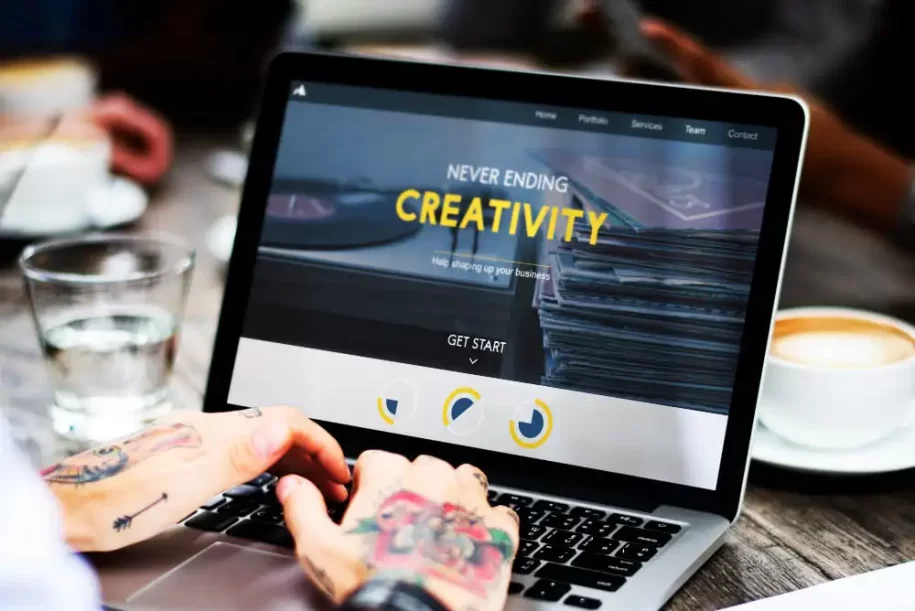Web design is constantly evolving. As technology advances, new trends and tools emerge, reshaping how we create and interact with websites. Understanding these changes can help businesses and designers stay ahead of the curve. This article explores the future of web design by highlighting emerging trends and technologies.
Responsive Design and Mobile-First Approach
In today’s digital landscape, more people access websites via mobile devices than ever before. According to recent studies, over 54% of global web traffic comes from mobile devices. This shift emphasizes the importance of responsive design, which ensures that websites function well on various screen sizes and orientations.
The mobile-first approach prioritizes the design for smaller screens before expanding to larger displays. By focusing on mobile users, designers create streamlined, user-friendly experiences. This trend is crucial for improving site performance and user engagement. Designers must optimize images, simplify navigation, and ensure fast loading times for mobile users.
Dark Mode and UI Customization
Dark mode has gained immense popularity across apps and websites. With OLED screens, this function lessens eye strain and prolongs battery life. As users become more accustomed to dark mode, web designers are adopting this trend. Offering users the option to switch between light and dark themes enhances user experience.
Additionally, UI customization allows users to modify their interface according to personal preferences. This trend promotes user engagement and loyalty. Designers can provide customizable features, such as color schemes, font sizes, and layout options, to meet diverse user needs.
Voice User Interface (VUI)
Voice technology is becoming integral to web design. Virtual assistants like Amazon Alexa and Google Assistant have popularized voice commands, making them a preferred method for searching and interacting with devices. As voice search usage increases, web designers must consider how users will interact with their sites through voice.
Creating a voice user interface (VUI) involves designing for auditory feedback rather than visual elements. This shift requires a focus on natural language processing and ensuring that web content is accessible via voice commands. Optimizing websites for voice search can significantly improve visibility and user experience.
Artificial Intelligence and Machine Learning
Web design is changing as a result of machine learning and artificial intelligence (AI). These technologies enable personalization by analyzing user behavior and preferences. Websites can offer tailored content, product recommendations, and even design suggestions based on user interactions.
Chatbots, powered by AI, enhance customer service by providing instant responses to user inquiries. This feature improves user satisfaction and engagement. As AI technology advances, we can expect more sophisticated chatbots that understand context and provide personalized experiences.
Augmented Reality (AR) and Virtual Reality (VR)
Users’ interactions with websites are being revolutionized by augmented reality (AR) and virtual reality (VR). These technologies offer immersive experiences that engage users in ways traditional Web design cannot. For example, AR can allow users to visualize products in their environment before making a purchase.
Businesses in retail, real estate, and education can benefit from integrating AR and VR into their websites. By offering virtual tours or interactive product demonstrations, companies can enhance user engagement and drive conversions. As these technologies become more accessible, we can expect to see them integrated into mainstream web design.
Minimalism and Clean Design
For a number of years, minimalism has been a prominent trend in online design, and it doesn’t seem to be going away. Simple, clutter-free designs improve user experience by emphasizing key components. This approach allows users to navigate websites easily and find the information they need without distractions.
Incorporating ample white space, clear typography, and concise content are key components of minimalist design. This trend aligns with users’ preferences for fast-loading, efficient websites. As attention spans decrease, minimalist design will remain vital for keeping users engaged.
Micro-Interactions and Animation
Micro-interactions are subtle animations that enhance user experience by providing feedback for specific actions. For example, a button changing color when clicked or a loading animation while data is being processed are common micro-interactions. These small details can significantly impact how users perceive a website.
Animations can also guide users through complex processes, making them feel more engaged and informed. As web design evolves, incorporating micro-interactions and animations will be crucial for creating dynamic and engaging user experiences.
Sustainability in Web Design
Sustainability is becoming an essential consideration in Web design. As awareness of environmental issues grows, users expect businesses to adopt eco-friendly practices. This trend influences web designers to create energy-efficient websites that minimize their carbon footprint.
Optimizing images, reducing server requests, and choosing green hosting providers are ways to enhance sustainability. Additionally, designers can focus on creating digital experiences that encourage eco-friendly behaviors. By aligning web design with sustainability goals, businesses can attract environmentally conscious consumers.
Accessibility and Inclusive Design
Accessibility is a fundamental aspect of modern web design. Websites must be usable for all individuals, including those with disabilities. This trend emphasizes the importance of inclusive design, which considers the diverse needs of users.
Web designers should follow the Web Content Accessibility Guidelines (WCAG) to ensure their sites are accessible. Implementing features like alt text for images, keyboard navigation, and screen reader compatibility can enhance user experience for everyone. As inclusivity becomes a priority, businesses that prioritize accessibility will gain a competitive edge.
Content-Centric Design
In the future of web design, content will remain king. Designing websites around compelling, high-quality content will be crucial for attracting and retaining users. This trend emphasizes the importance of storytelling, engaging visuals, and informative articles.
Content-centric design encourages designers to create layouts that highlight essential information while maintaining an aesthetically pleasing appearance. By prioritizing content, businesses can foster a deeper connection with their audience, leading to increased loyalty and engagement.
Integration of Social Media
Social media plays a significant role in how users interact with websites. Integrating social media elements into web design can enhance user experience and drive traffic. Features like social sharing buttons, embedded feeds, and user-generated content can foster community and engagement.
As social media continues to influence consumer behavior, designers must consider how to incorporate these platforms seamlessly into their websites. This integration can help businesses expand their reach and create a more interactive online presence.
Focus on Performance and Speed
Website performance is a critical factor influencing user experience and search engine rankings. As competition increases, users expect fast-loading sites. Designers must prioritize performance optimization, ensuring that websites load quickly and efficiently.
Techniques such as image optimization, code minification, and utilizing content delivery networks (CDNs) can significantly improve site speed. By focusing on performance, businesses can enhance user satisfaction and boost their online visibility.
Enhanced Security Features
As cyber threats become more sophisticated, website security is paramount. Users are increasingly concerned about the safety of their data when browsing online. web designers must implement robust security features to protect user information and build trust.
Utilizing HTTPS, regularly updating software, and incorporating security plugins are essential practices for safeguarding websites. By prioritizing security, businesses can reassure users and enhance their online reputation.
Call +91 9656180219 for Web Design Service in Trivandrum
The future of web design is bright, filled with exciting trends and technologies that promise to reshape the digital landscape. By embracing responsive design, AI, AR, and sustainability, designers can create engaging, user-friendly websites that meet the demands of modern users.
As these trends continue to evolve, staying informed and adaptable will be crucial for web designers and businesses alike. By focusing on emerging technologies and user needs, we can pave the way for a more innovative and inclusive web experience.



